The use of plastic across numerous industries has faced mounting pressure over recent years as consumers become more aware of plastic waste and its impact on the environment.
Although scrutiny has grown across the board, pressure has been particularly great on food and drink packaging, which has become a top concern for many. To align with consumer demand and keep up with changes imposed by governments, innovation will be key to providing alternatives to plastic food and drink packaging.
In this article, Mintel deep dives into the current and future food packaging industry trends, which are influenced by consumers’ shifting attitudes towards sustainability as well as legislative changes across markets to support more eco-friendly practices.
Sustainability & Eco-Friendliness Influence the Leading Food Packaging Market Trends
Consumers’ awareness of the environmental repercussions of excessive and/or plastic food and drink packaging is growing, as is their awareness of their own responsibility regarding planetary health. As a result, consumers across the globe also have higher expectations when it comes to brands’ sustainability efforts; indeed, 30% of consumers say a rating scale showing environmental impact would influence their purchasing decision. Consequently, they approach their own buying behaviour with a more environmentally-conscious mindset – in Germany, for example, 36% of consumers bought more products with minimal packaging in 2024.
What is trending in packaging?
Consumers show strong concerns about food packaging waste ending up in the environment, with over 7 in ten UK consumers expressing worries about it ending up either in the sea, in landfills, or in the local environment.
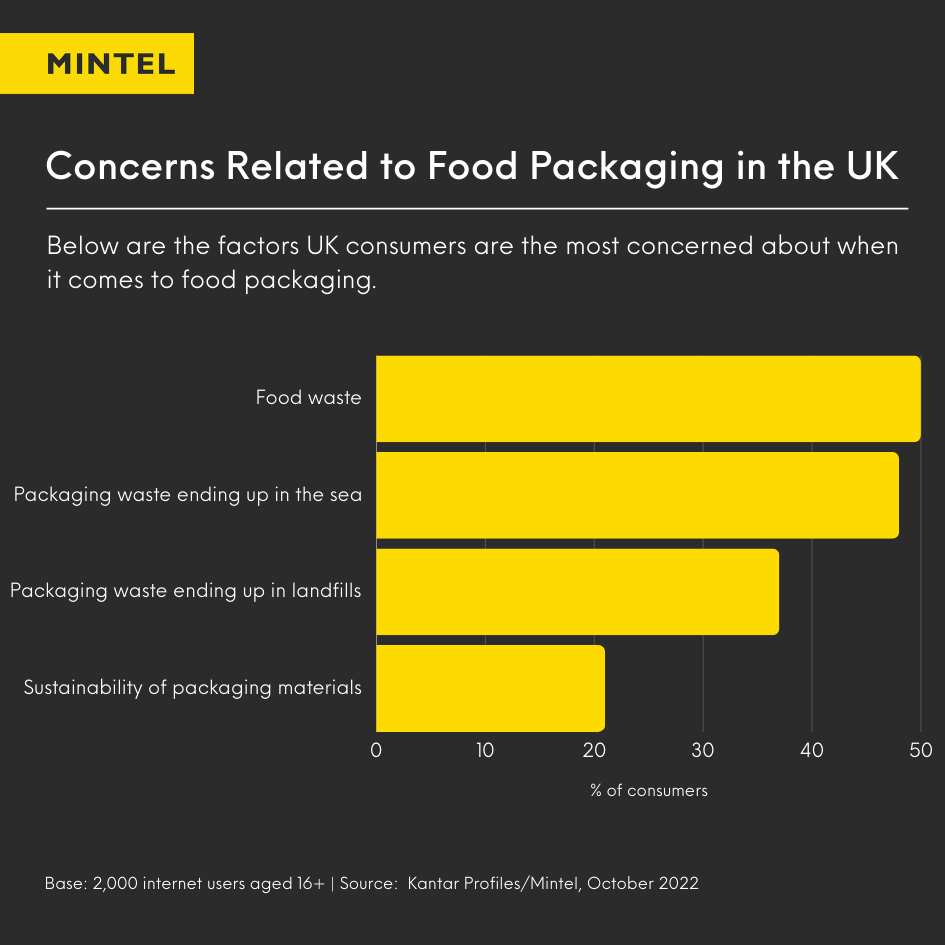

While packaging material as well as the amount used to wrap products play a significant part in this discussion, recycling and reuse of food packaging remain the most common sustainability-driven consumer behaviours related to food. Consumers are substantially more likely to engage in these tangible, post-purchase behaviours than they are to alter their purchases based on the sustainability of the product or package.
1. The Reduction of Plastic Packaging
Reducing the use of plastic is the most obvious solution according to current trends in food packaging. Over half of food product launches in 2022 in the UK used plastic packaging within their primary or secondary packaging, a share that has remained consistent for the past five years. Plastic cannot be fully banned from food and drink packaging due to its protective qualities that play a key role in ensuring hygiene, protecting the products, and extending their shelf life. Nevertheless, companies have begun to launch initiatives to reduce plastic use by redesigning packaging and using less material to tap into emerging trends in food packaging. This has included leading brands reshaping cheese blocks and widespread removal of clip lids. Moreover, a growing number of brands have adopted paper or cardboard packaging, such as ice cream brand Carte D’Or and Morrisons for its own-label milk. Seeing plastic-free alternatives like this will likely shift consumer expectations of packaging materials in these categories.
2. Circularity and Refills Face Resistance
The latest food packaging market trends around circularity and refills will require a major shift in consumers’ mindsets. Recyclability can help quell concerns surrounding plastic waste and help companies gain favour with consumers, as two-fifths of buyers in the UK say recycling packaging makes a product more sustainable. This is similar to consumer sentiment in APAC where half of Thai consumers state that they try to repurpose/reuse food and drink packaging.
However, to further their commitment to integrating sustainability into their operations and products, leading supermarkets are testing unpackaged food schemes. One standout example is Asda who introduced refill stations to some of their stores. A refill price promise was introduced, meaning that the refill products are cheaper than packaged equivalents, which further gives consumers an extra incentive to opt for the more sustainable alternative. Tesco, who ran a trial of a similar offer with a range of products, commented upon ending the trial period that while a prefill model of reuse has strong potential, it would require a major shift in consumers’ mindsets to establish its place in the market.
3. The Impact of Food Waste on the Environment
Besides plastic pollution, extensive food waste also poses a threat to the environment. While a lot of focus centres around making packaging more sustainable, it must also keep food fresh: over half of Gen X in Thailand are willing to pay more for packaging that keeps food fresh for longer. There is scope for packaging to shine a light on protecting food and avoiding food waste, as half of UK consumers list food waste as a top three food-related concern. This highlights linking the role of food and drink packaging to extending the shelf life of products. Shelf-stable brands can do more to explain the benefits of their products to consumers. For example, German brand Milik Veganz produces oat milk in sheet form, which saves 94% packaging and 85% of the weight of liquid milk.
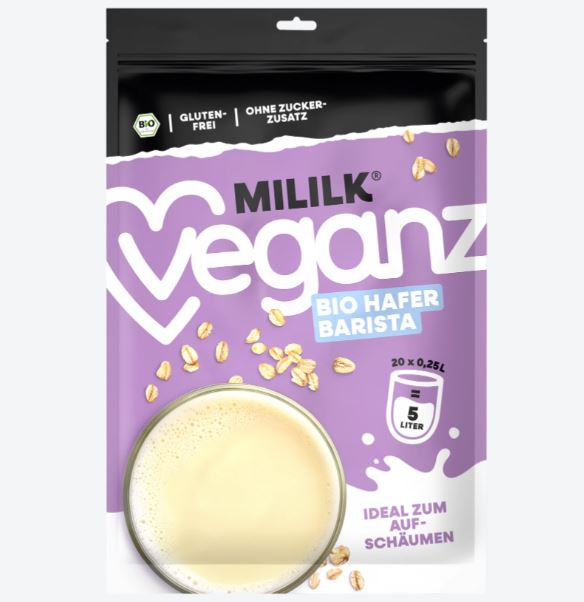

Berlin-based brand Milik Veganz offers oat milk in sheet form, drastically minimising packaging and food waste. Source: shop.veganz.de
Support through legislative changes: What is the future trend in food packaging?
The UK government’s Resources and Waste Strategy contained proposed measures that aim to reduce packaging waste and move the country towards a more resource-efficient future. It is seen as a much-needed framework to reboot recycling and support the shift towards a more circular economy, as this cannot be accomplished solely by relying on consumers’ and businesses’ sense of responsibility.
On average, 180kg of packaging waste is generated by each European per year. Consequently, the EU has banned the use of single-use plastics in 2023, and further EU-wide rules on packaging will tackle this growing source of waste, such as measures for fully recyclable packaging by 2030.
In the APAC region, the Thai government is taking action towards minimising plastic pollution. In 2022, styrofoam packaging and single-use plastic were banned from usage at national parks, due to the threat of plastic waste to the country’s wildlife.
Challenges in the way of the latest food packaging trends
- The high cost of living has pushed back on sustainably-conscious emerging trends in food packaging.
Although consumers are aware of the environmental repercussions of excessive plastic food and drink packaging, the income squeeze causes sustainability to take a backseat among consumers’ priorities. While, overall, 53% of food consumers say that sustainability is one of the top three important factors, this varies depending on their financial situation. In the US, consumer sentiment is quite similar, with more than six in 10 shoppers agreeing that price is more important than environmental claims. This being said, when all else is equal in a product, sustainable packaging can be the deciding purchase factor. Young US consumers, aged 18 to 34, especially, are more likely to make sustainability a priority, pointing towards a generational shift in attitudes.
- A lack of transparency puts consumers off.
There is widespread uncertainty about the green credentials of packaging types, causing 64% of people in the UK difficulties in knowing which type of food packaging is the most sustainable. To clear up confusion, consumers would appreciate clear communication about information on the overall environmental impact of packaging, suggesting scope for companies to talk openly about their packaging choices.
Food Packaging Industry Trends are Driving Innovation in Packaging
When assessing packaging, food shoppers in the US tend to place importance on practical, immediate features, and benefits take priority while sustainability-related factors fall farther down the list. These are US consumers top priorities when it comes to food and drink packaging:
Communicating these benefits (freshness, value, healthfulness) is key to tap into consumer interest. Older consumers especially express interest in functional packaging benefits.
Alternative materials will pave the road into the future
Over 30% of buyers in Germany would choose one product over another if it had plastic-free packaging. This shows that brands are advised to invest in innovative packaging methods, such as paper or compostable solutions.
29 to 42% of consumers in the US associate glass jars with flavour protection, freshness, and trustworthiness, making them the hallmark of high quality.
While glass jars and paperboard have the advantage when it comes to perceptions of sustainability, plastic maintains its association with convenience, driven by plastic’s versatility and lightweight, but tends not to stand out on other attributes. Biodegradable plastic could be the new thing to support the eco-perceptions of plastic. Although it already draws consumer interest, it may not yet be feasible on a large scale.
While biodegradable plastic is still in its infancy, the following alternatives to reduce food packaging waste are already making waves:
Notpla‘s seaweed-based containers can be composted in regular food waste, thereby cutting out any additional waste through packaging. Notpla provided containers for a series of high-profile European football finals, proving scalability and suitability for big occasions.
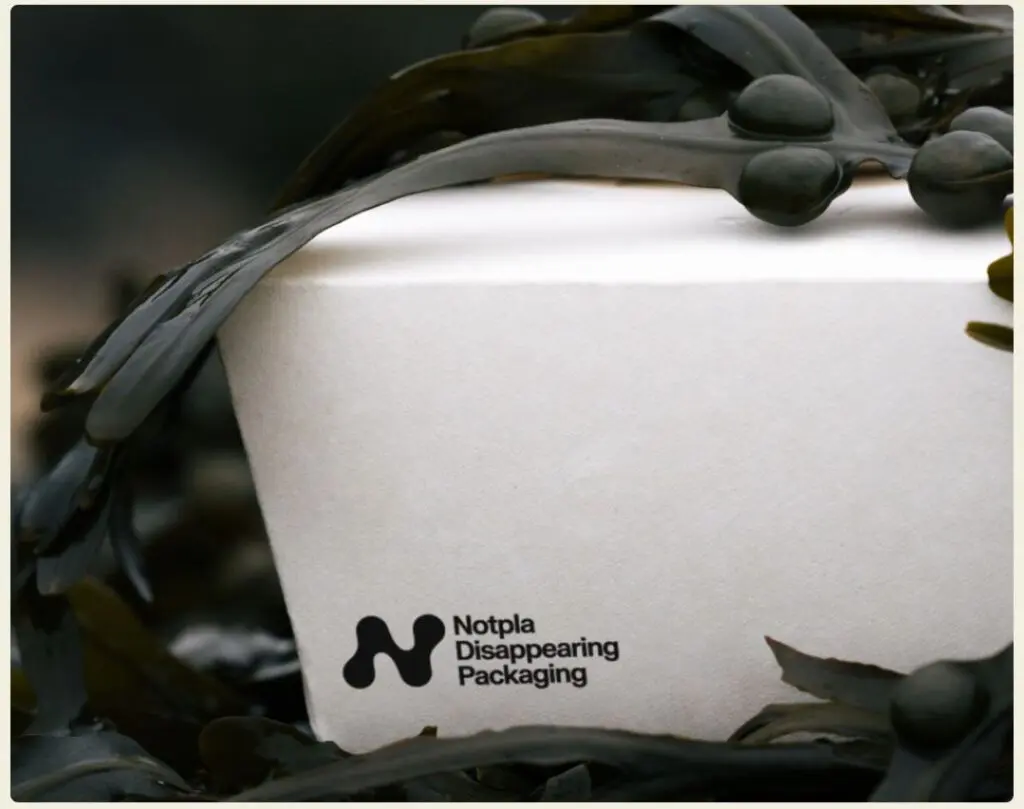
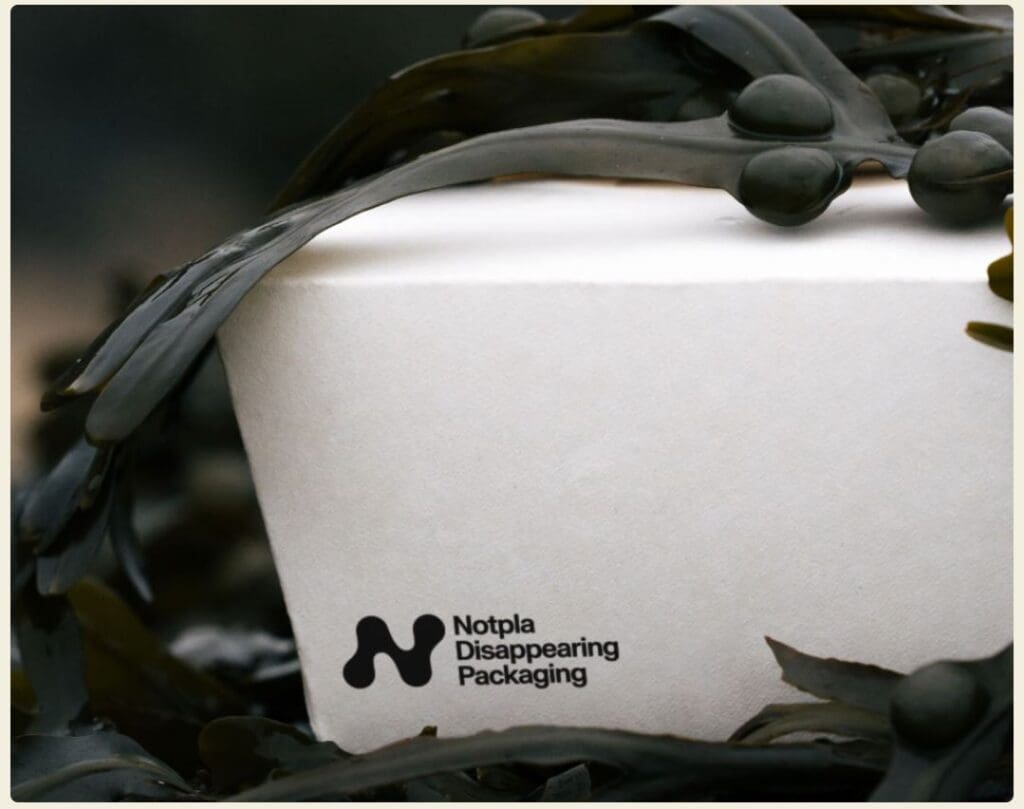
Notpla’s “disappearing packaging” is among the biggest emerging trends in food packaging. Source: notpla.com/food-containers.
2. The Potato Starch Bottle
TomorrowMachine, a Swedish design studio partnered with juice company Eckes-Granini to pioneer ‘GoneShells’ – juice bottles made from potato starch that can be dissolved in warm water. Similarly to Notpla’s seaweed containers, these provide a convenient solution to food and packaging waste that leaves behind no trace.
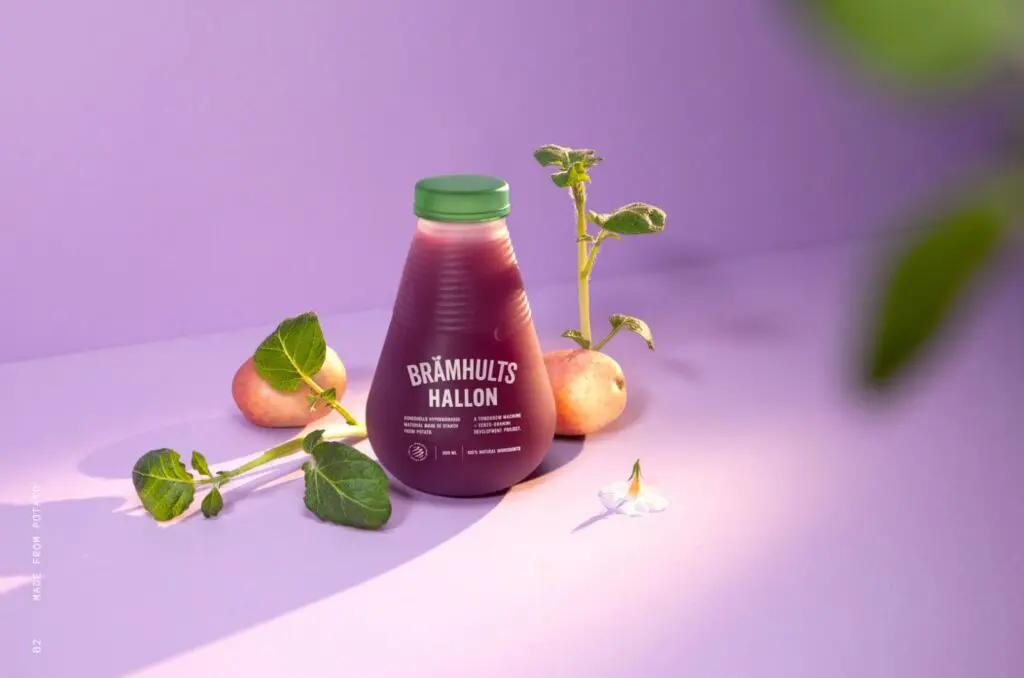
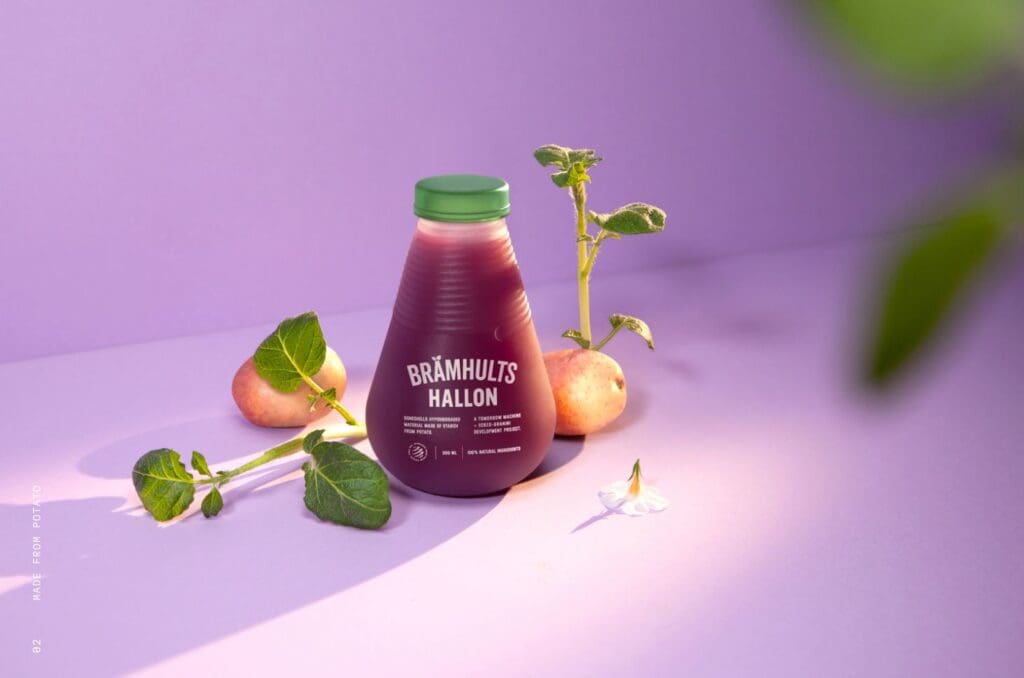
‘GoneShells’ by TomorrowMachine leave behind no visible trace and can be dissolved in warm water. Source: goneshells.com.
Nestlé’s Maggi brand proved its commitment to the planet on World Environment Day, launching a limited-edition plant-based fork that is completely edible in India. This provides maximum convenience for consumers eating lunch on-the-go. To act sustainably, they won’t have to carry their own forks with them, but won’t be contributing to the amounts of waste either.
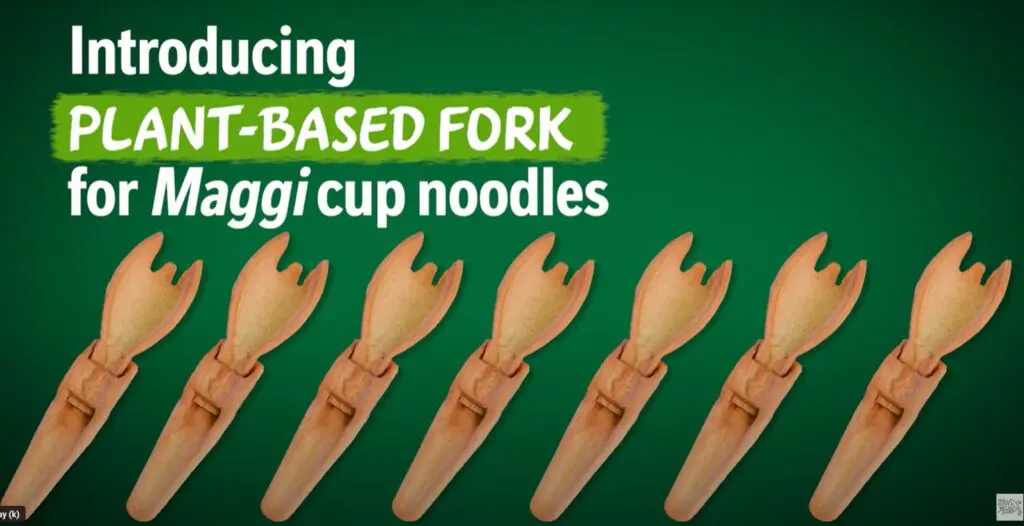
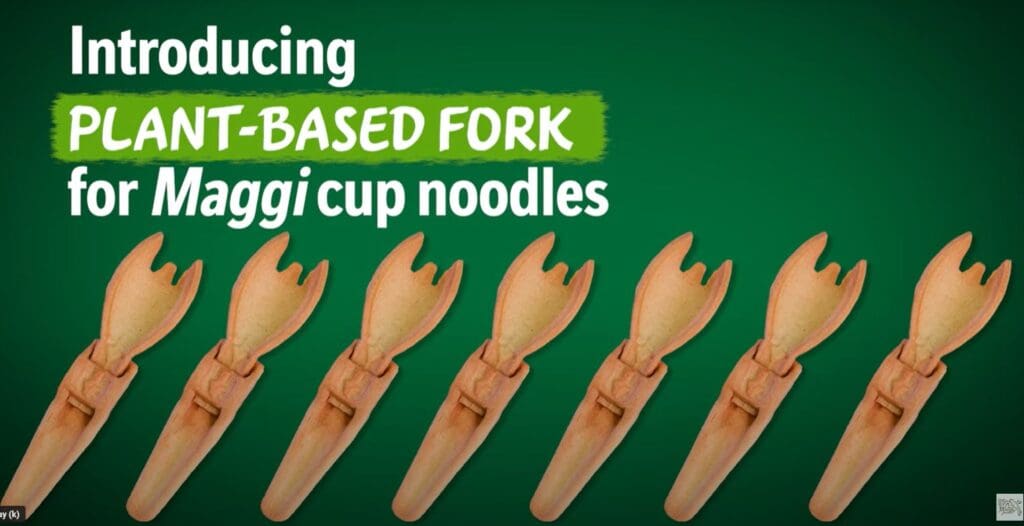
Nestlé’s Maggi launched a limited-edition all-edible fork to go with its Maggi noodle cups. Source: nestle.com
Looking Ahead with Mintel
The latest food packaging trends analysed in this article show that awareness of the harmfulness of excessive plastic packaging among consumers is growing. Therefore, consumer demand for more sustainable alternatives and responsibility from brands is shifting. Governments across markets are also increasing the pressure on brands to step up their eco-friendly efforts.
While a full ban on plastic in food and drink packaging is unlikely due to its key role in keeping food fresh, we will see increased investments in innovative alternatives that will help minimise the use of plastic in food and drink packaging.
Visit the Mintel Store to browse all our market research on the packaging industry.
If you’re interested in unwrapping more market insights and fresh perspectives from our analysts subscribe to our free newsletter Spotlight.
24World Media does not take any responsibility of the information you see on this page. The content this page contains is from independent third-party content provider. If you have any concerns regarding the content, please free to write us here: contact@24worldmedia.com

